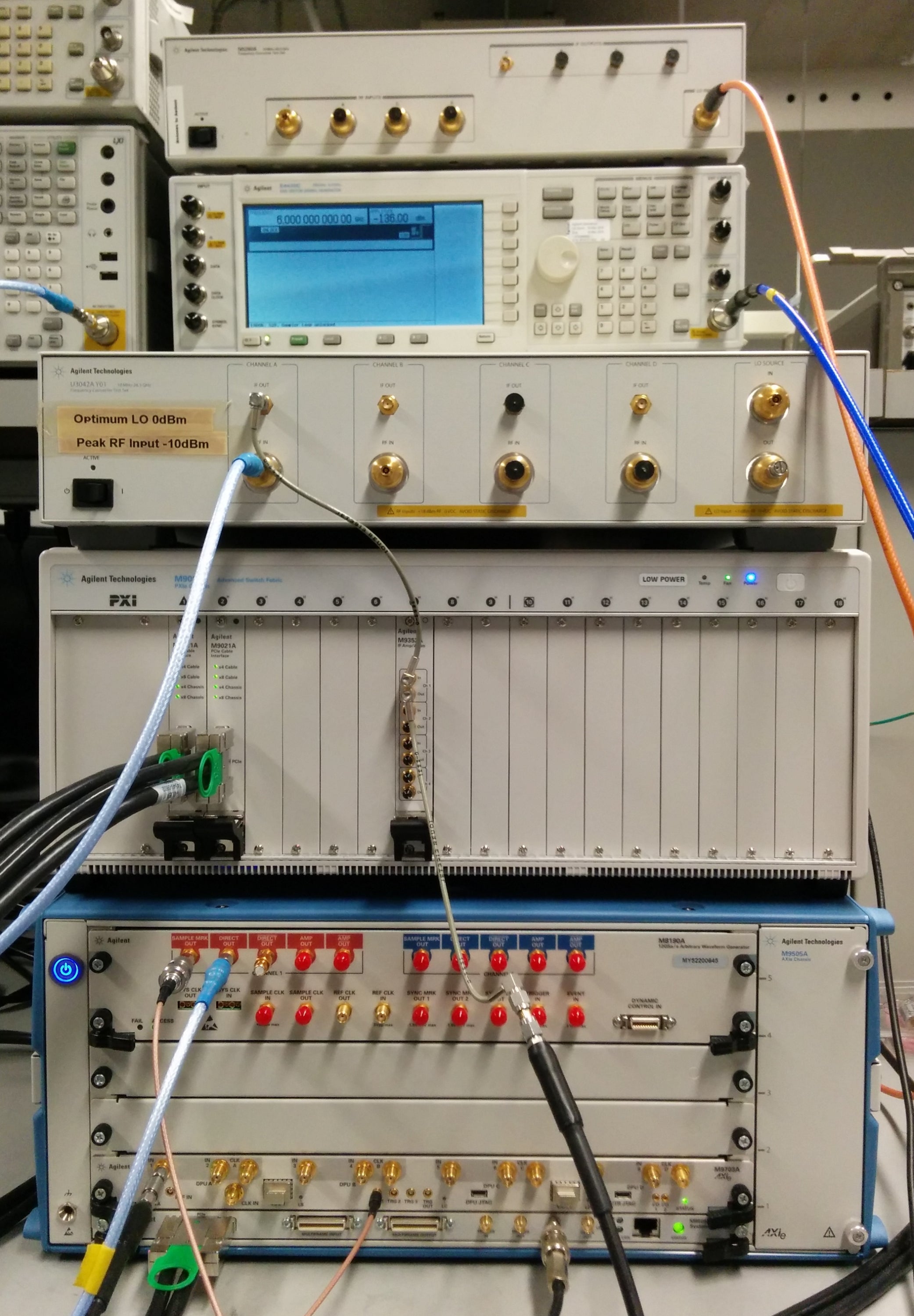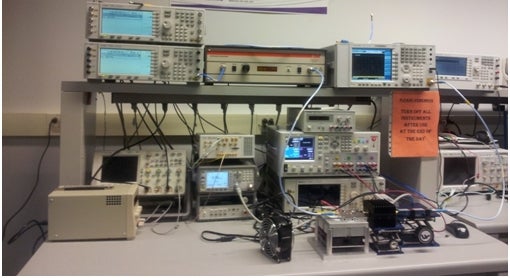The Emerging Radio Systems Group (EmRG) operates its own laboratory facilities in room 4021 of the Engineering 5 (E5) building at the University of Waterloo. EmRG personnel also have access to borrow and share equipment with other research groups within the Department of Electrical and Computer Engineering. Our lab is equipped with several state-of-the-art tools, organized into one or more testbeds, as outlined below.
High speed, multi channel, vector signal generation and analysis testbed
This testbed is used to convert baseband digital signals (even multi-carrier signals) uploaded via MATLAB to radio-frequency (RF) signals, and vice versa. The ability to transmit multi-carrier signals with high carrier separation makes it suitable for multiple-input-multiple-output (MIMO) testing.
It includes an arbitrary waveform generator with a sampling rate of 8 giga-samples/second (GS/s) and a resolution of 14 bits, as well as a digitizer with 8 channels and a 1GS/s sampling rate.

Power amplifier modeling and linearization testbed
This setup is used for the behavioral modelling and linearization of RF power amplifiers (PAs). It includes test equipment controlled by in-house test automation platform and graphical user interface that coordinates measurements of PAs amplifying various wireless communication signals (such as WCDMA or LTE).
This setup is capable of generating continuous-wave (CW) input signals, as well as modulated signals at frequencies ranging up to 20 GHz, with an instantaneous bandwidth up to 100 MHz. The output of the PA in response to the generated input is captured using a spectrum analyzer with a measurement bandwidth of 160 MHz and frequency range up to 26GHz.

Multi-harmonic, hybrid (active/passive) load-pull testbed
This testbed is used for the assessment and characterization of active, radio-frequency devices such as amplifiers and mixers or passive devices such as filters, attenuators.
It comprises a 4-port vector network analyzer, capable of operating between 10 MHz to 26.5 GHz, with software upgrades for the measurement of X-parameters and pulsed-RF measurements.
This testbed also includes source and load tuners used for harmonic load-pull measurements. These tuners employ three independent and wideband probes for impedance measurements at three harmonic frequencies, anywhere between 1.8 to 18 GHz.

Programmable testbed for real-time signal processing for wireless communications
This testbed allows for the validation of digital signal processing algorithms under conditions that are representative of real-word deployment of wireless communication hardware.
It includes a Stratix IV field-programmable gate array (FPGA) development board to emulate the transceiver baseband circuitry; an Analog Devices' mixed-signal digital predistortion board to emulate the transceiver signal conversion between digital-to-analog and vice versa; an RF front-end for filtering, frequency translation, and signal amplification and attenuation; and a host computer (PC) to control the hardware and software.
